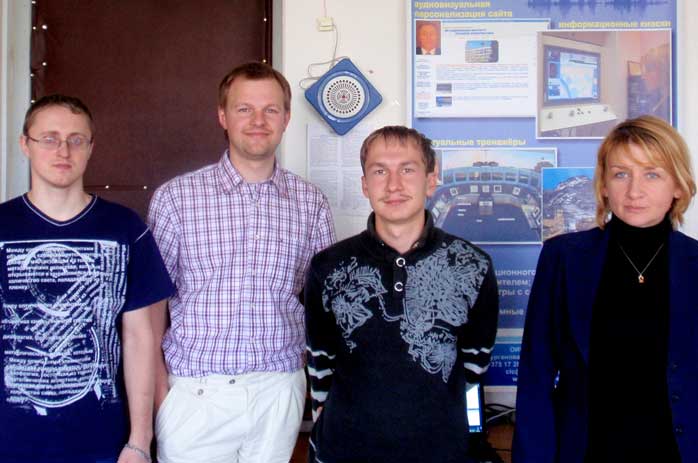The computer has learned how to speak Belarusian: the program uses different voices, but stresses cause more difficulties.
The technology of text recognition and its transformation into speech is designed for many world languages. Now Belarusian is not an exception. In our country, the United Institute of Informatics Problems of the National Academy of Sciences, as well as a private company “Sacrament” develops such a mechanism. Lilija Cyruĺnik, the candidate of technical sciences, and Juraś Hiecevič, junior researcher, who is directly involved in the Belarusian module, tell about their development.
“Nasha Niva”: On which does your lab specialize?
Lilija Cyruĺnik: Our specialization is the development of text-to-speech synthesizer for the Belarusian language. In addition, we have developed such systems for the Russian and Polish languages. We are also engaged in the creation of a synthesizer for the Yakut language.
“NN”: Where your program can be used?
LC: The scope of application is wide enough: the creation of audio-books, e-mail reading, blind people assistance. What is more important, that Belarusian speech synthesis system will help to preserve the language.
“NN”: How much this program costs?
LC: There is no commercial version of the program for Belarusian. It will be created within a few months. For an end user it will be one price, for the corporate usage or for the usage in system for informing subscribers it will be another one. For example, we have created a program, «aBookForge», for the audio-books voicing in Russian, which costs around 7$. You may focus on to this cost.
“NN”: How long have you been engaged into speech synthesizer development?
LC: The laboratory has been existing for over 40 years. Barys Miafodzievič Labanaŭ, Former Head of the Laboratory, is a well-known scientist, who has a lot of scientific researches. By the way, our synthesizer sounds with his voice. We started to work out Belarusian synthesizer 10 years ago.
“NN”: Do you consult with philologists?
LC: Of course. It is necessary to take into account the features of sounds and intonation. For example, in the Polish language stress falls mainly on the penultimate syllable. Language is constantly developing, new words are appearing. But the number of sounds is limited. There are 42 sounds in Belarusian. Thus, using the existing sounds base the program forms words, sentences, texts… In addition, the same sound can be pronounced with a different intonation and tempo.
“NN”: Can the program “talk” with a voice of another person by the wish of a customer?
LC: As for a personal voice, we have developed a technology with any speaker can read a particular text, make an audiorecording of it. Then, this record is processed in a special way and a speech database is created. Therefore, theoretically the program can talk in any voice.
“NN”: What difficulties have you faced while developing the Belarusian version?
Juraś Hiecevič: The most difficult cases consist of various abbreviations, acronyms, dates, as well as stress arrangement. Moreover, people often make mistakes while writing texts. So, my task is to create a linguistic unit, which could recognize “coded” expressions in the text, transfer it into spelling words, then find the words in a dictionary and put stresses. At the beginning, there was no dictionary. We got it from the Laboratory of Computational Linguistics of BSU. It is clear that we had to adapt it, add new words and names.
For a better understanding, how the program works, Juraś Hiecevič typed a few words on the keyboard and the computer with pleasant slight metallic male voice told us: “Hello, the newspaper “Nasha Niva”! You are the first Belarusian newspaper illustrated with pictures. And we are the first laboratory that synthesizes the Belarusian language “.
27.09.2011
Aksana Rudovič
Source: http://nn.by/?c=ar&i=60765
